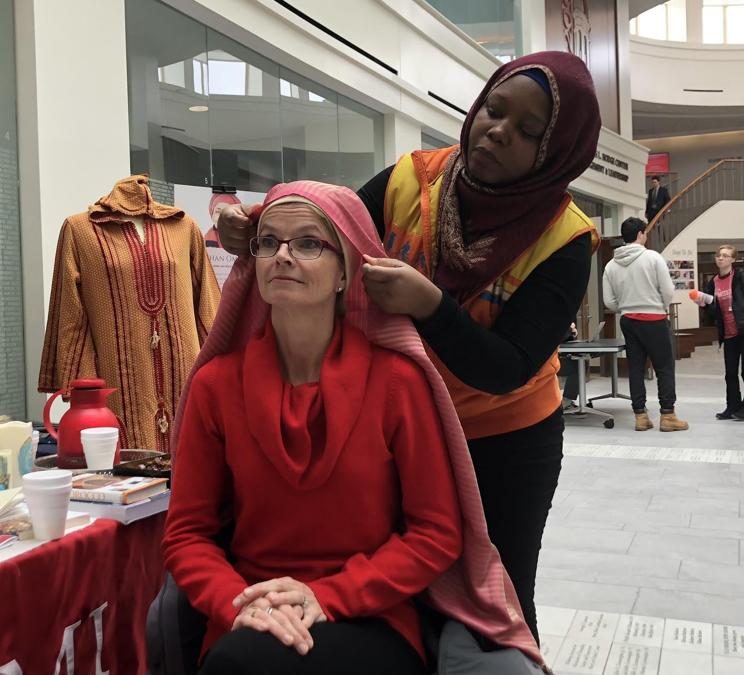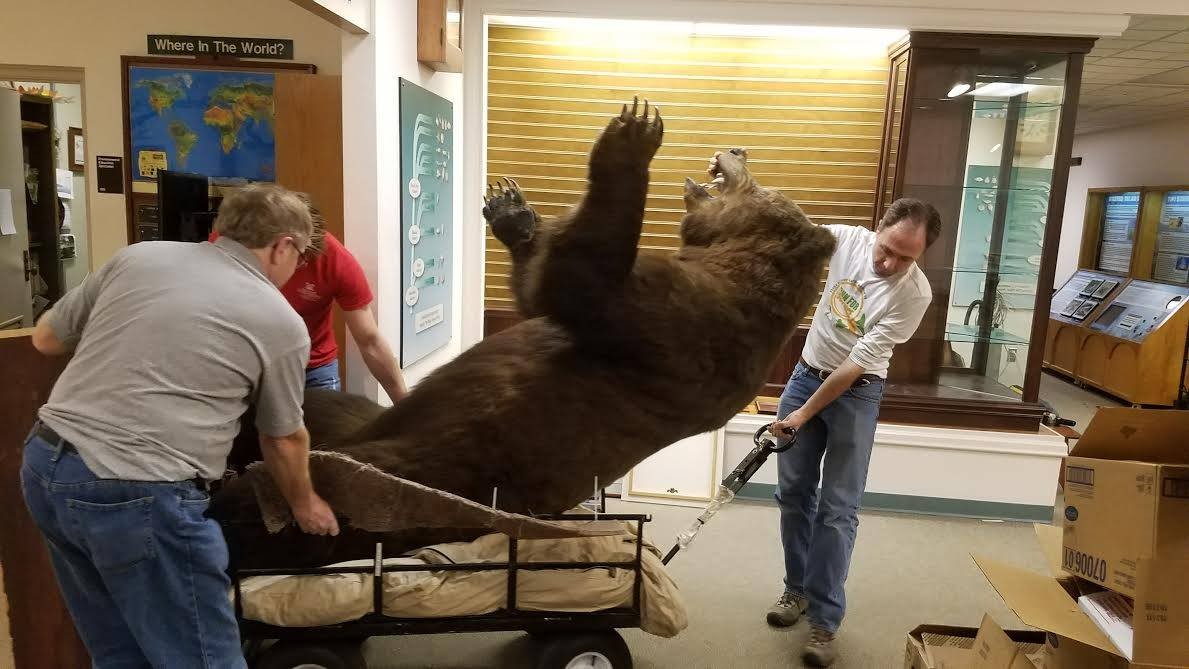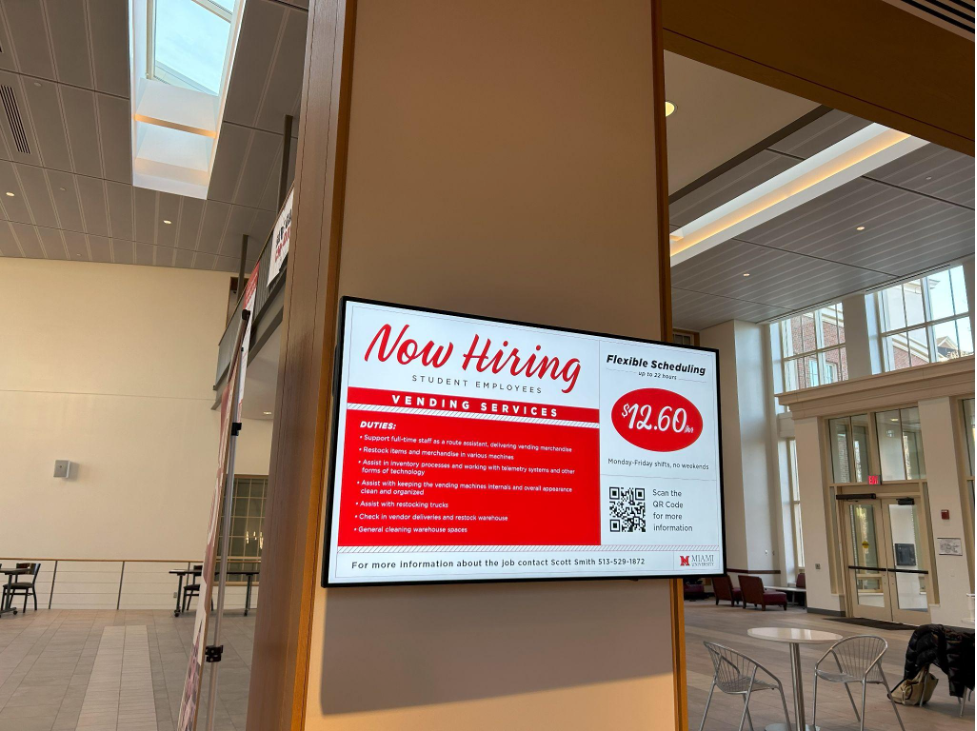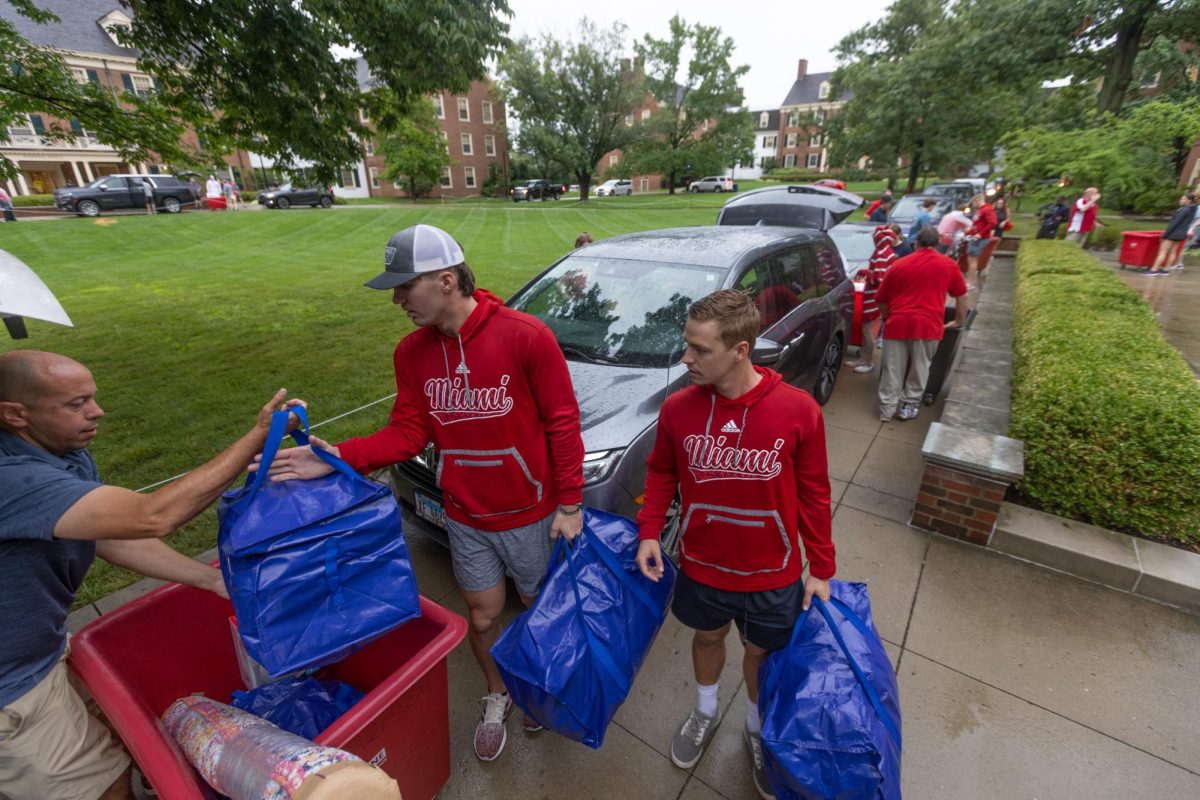When Jackie Othman puts on her hijab, she feels empowered.
She doesn’t view it as something that is forced upon her, but rather something that allows her to stand out from the crowd. To her, the hijab conveys not only her modesty but also the fact that she is different and chooses to be that way, said Othman, the Rahma Service Coordinator at the Islamic Center of Greater Cincinnati.
Explaining and sharing such feelings was a goal of World Hijab Day, celebrated in Oxford on Feb. 1, with a display, conversations and demonstrations in the Armstrong Student Center.
In Arabic, the word hijab means “to cover” or “to veil” and commonly refers to a traditional square scarf worn by Muslim women to cover their hair, neck and sometimes their face. In the Islamic culture, the hijab is a symbol of a Muslim woman’s identity and a representation of Islamic ideals that the Muslim woman should exemplify.
The first World Hijab Day occurred on Feb. 1, 2013, when Nazma Khan sought to create a space for all women to come and learn more about the significance of the hijab. Khan, who moved from Bangladesh to New York City at age 11, believed that exposing women to the hijab would help combat prejudice and discrimination.
“We’re all different people who want to come and talk and understand,” Fatima Emlemdi, a member of the Islamic Center of Greater Cincinnati, said. “We should be open to those people.”
Emlemdi also belongs to a local circle called the Muslim and American Women’s Collaboration Group, who partnered with the Women’s Center and Global Initiatives to set up the World Hijab Day event at Miami.
Emlemdi and her daughter personally choose not to wear the hijab, because they don’t believe they’ve reached that level in their faith yet. In their eyes, choosing to wear the hijab means fully committing themselves to God and embodying the ideal Muslim woman.
“It has to be a decision you make, something you’re going to wear all your life,” Emlemdi said. “You can’t just wear it today and not tomorrow.”
In Emlemdi’s eyes, Muslim women should never feel pressured to wear, or to not wear, the hijab.
“You set your own rules. Be what you are, confident and strong in yourself, by your definition, by your standard.”
Correcting a Common Misunderstanding
A common misconception is that the hijab is mandatory for all Muslim women to wear, but Karen Dabdoub corrects that assumption. Dabdoub has worn the hijab for 22 years. For her, it represents her faith and modesty but also her independence and individuality.
As Executive Director of the Council on American Islamic Relations’ (CAIR) Cincinnati Office, Dabdoub encourages conversation between all religious communities, so people can come to a greater understanding about religions that differ from their own. In her mind, the World Hijab Day celebration offers such an opportunity for recognition and awareness.
“Understand that each person is individual and doesn’t speak for the entire community,” Dabdoub said. “Each person can only speak about their experiences and their own beliefs.”
Dabdoub hopes events like World Hijab Day can remove the stereotypes surrounding the hijab.
She stresses how not every Muslim woman is forced to wear a headscarf only because a man in her family tells her to.
“It represents modesty and humility, but it also represents independence and individual personhood. It represents my faith in God and my obedience to God, not to any human being.”
Zaim Haq, co-president of the Muslim Students’ Association on Miami’s campus, agrees with Dabdoub. To him, the hijab is a clear expression of a woman’s faith, not her oppression.
“It’s a really important symbol, an important part of Muslim identity. People who see it are able to relate to the fact that [the woman] probably is Muslim,” Haq said.

Identity is a key point for Muslim women who choose to wear the hijab. As one of the few women in the Muslim and American Women’s Collaboration Group who was not born and raised as a Muslim, political science major Helena Kabasele struggled with this identity and whether or not she wanted to wear the hijab.
“When I converted to Islam, it took me some time to actually wear the hijab,” Kabasele said. “Now, I feel like if I ever took it off, I wouldn’t feel good. It’s who I am, and it identifies me better.”
Kabasele converted from Christianity to Islam about seven years ago, and upon first coming to Miami she worried about finding Muslim women to socialize with.
“I was just looking for a core group that I could belong in,” Kabasele said.
Kabasele heard from a friend about the Muslim and American Women’s Collaboration Group. She now meets with them regularly and volunteers at events like World Hijab Day to spread awareness about the Muslim population in Oxford.
“Events like this help people to know, ‘Okay, I have Muslim students here, I have a Muslim classmate,’” Kabasele said. “It also opens the door for them to ask questions.”
Kabasele volunteered at the World Hijab Day table for the entirety of the event and helped several students try on the hijab. Junior diplomacy, global politics and psychology major Madison Cook had been looking forward to the event ever since she first heard about it.
“I’ve seen the event for the last couple years on different news sites. I really wanted to try it today because I felt like I had missed it,” Cook said, “and I’d always wanted to experience it.”
As Kabasele finished wrapping Cook’s headscarf, Cook looked into one of the small mirrors on the table. The more she gazed into the mirror, the wider she grinned, looking up at Kabasele to thank her for this opportunity.
“I actually feel really beautiful. I love the colors, and I feel like it frames my face really well,” Cook said. “It’s actually kind of liberating. I like it.”
A Chance to Experience a Different Perspective
Cook, who is not Muslim, appreciated the chance to try on the hijab and recognize its significance to the Islamic culture. In her mind, events like this allow for further discussion and understanding.
“Having conversations like this just makes everybody feel more comfortable. And being able to be open and talk about things that are vulnerable just brings us closer together,” Cook said.

Students and community members have the opportunity to participate in World Hijab Day and other intercultural events due to the efforts of Rhonda Jackson, administrative assistant in the Women’s Center and co-founder of the Muslim and American Women’s Collaboration Group.
Three years ago, an Iraqi woman named Shatha Alazawi moved to Oxford with her husband so he could work as a professor in the chemistry department. Being an educator herself, Alazawi sought to educate the Miami population about Muslim culture; along with Sarah O’Connell, who worked in Global Initiatives, and Jackson at the Women’s Center. The three of them founded a group for Muslim and non-Muslim women to meet and talk.
“We get together and have what we call taarof, which is loosely translated to ‘gathering,’” Jackson said. “And it’s lovely, because we don’t have to worry about a program; we just get together, spend time in the space with each other and be friends.”
The same year they founded the Muslim and American Women’s Collaboration Group, the three women set up their first World Hijab Day celebration. It included a table and a panel of Muslim women who shared their experiences and answered questions about their life and culture.
“It was really lovely to just have an opportunity to have an intercultural dialogue, an intercultural engagement and to just get to know each other on a personal basis,” Jackson said of the group and the event. Jackson decided against a panel this year due to the weather and the fact that World Hijab Day fell on a Friday night.
The Muslim and American Women’s Collaboration Group is comprised of undergraduate students, graduate students, faculty and Oxford community members.
“I will admit, as a non-Muslim, I have gotten so much out of this. I have gotten more from meeting these amazing women than I could ever give back to them,” Jackson said.
To learn more about the Muslim and American Women’s Collaboration Group, check out their Facebook page. To learn more about the Muslim Student Association, look at their page on the Hub website. To become more involved with CAIR or the Islamic Center of Greater Cincinnati, see their individual websites.












